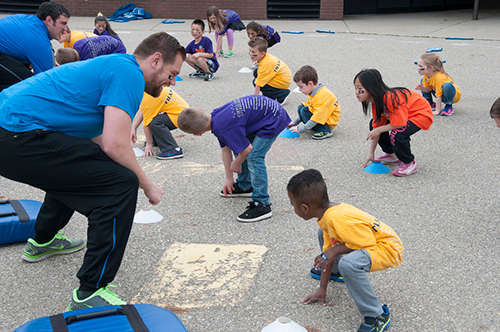Jul 28 2016 In Grand Rapids, cross-sector data sharing to measure impact of after-school programs
 Individual agencies or organizations often collect data on their programs and services to illuminate how those programs are performing. Sharing this data across agencies and sectors can paint a more multidimensional picture of impact than one organization on its own — For example, program providers can see how attendees of an after-school program are faring in school with data involving grades and social and emotional growth. Thanks to an aggregate data system, a network of after-school providers in Grand Rapids, Michigan, can do just that.
Individual agencies or organizations often collect data on their programs and services to illuminate how those programs are performing. Sharing this data across agencies and sectors can paint a more multidimensional picture of impact than one organization on its own — For example, program providers can see how attendees of an after-school program are faring in school with data involving grades and social and emotional growth. Thanks to an aggregate data system, a network of after-school providers in Grand Rapids, Michigan, can do just that.
A cross-sector data hub, the result of a 2014 pilot program for the Youth Community Data Center (YCDC), connects data from partners throughout Grand Rapids including: Grand Rapids Creative Youth Center, a writing-based after-school program, Grand Rapids Public Schools, the Community Research Institute, and the Grand Rapids Police Department. Data is also gathered from all organization members of Expanded Learning Opportunities Network (ELO Network), a coalition of after-school (and lunchtime or other school break times) program providers — The Network also secured grant funding for the creation of the pilot program.
The Community Research Institute retrieves and processes the data, and another partner, the John W. Gardner Center for Youth and Their Communities at Stanford University, contributed technical assistance to design the online data hub. The result is impressive: “We’re receiving aggregate data that we wouldn’t otherwise be able to see. … We can say, ‘Hey, our work really is having an impact,’” said Kristin Brace, Executive Director of the Grand Rapids Creative Youth Center, as quoted in a recent article. ELO Network can also measure impact by comparing data on their program participants to those from non-participants — For example, only 18.4 percent of ELO Network participants are chronically absent, compared to 31.4 percent of non-participating students, reports a recent article in MiBiz.
“We’re receiving aggregate data that we wouldn’t otherwise be able to see,” said the Creative Youth Center’s Brace. “We can say, ‘Hey, our work really is having an impact.’”
Sharing data across sectors speaks to a tactic from our Toolkit, Commit to Information Sharing. Aggregating data from disparate sources does come with its challenges, such as maintenance of privacy and security and disclosing sensitive information, but when done successfully it gives collaboration partners a more comprehensive understanding of the issue at hand. The practice of information sharing can also build trust among partners. Partners will be more likely to share information if the collaboration can instill confidence that the data will be managed safely and securely, as ELO Network instilled through entrusting the Community Research Institute with gathering and processing data.
In the case of FosterEd, an initiative that aims to improve the academic outcomes of foster children by ensuring they are supported by educational champions and strengthened by education teams, a similar data-driven tactic is used to achieve similar outcomes. FosterEd provides information to stakeholders on the ground, and helps districts identify which children are in foster care. Working with Sundaram LLC, an Internet marketing service, FosterEd developed an educational case management system. The web interface allowed education liaisons, social workers, and court staff to track the educational progress of each child. The system also allowed the program to be effectively managed, helping FosterEd to make programmatic decisions, such as adding more liaisons or increasing trainings on common challenges. It also allowed FosterEd staff to determine if a change in education policy would provide a solution for a certain educational need. Sharing information is also essential to ensuring the educational progress of each child – a foster child’s “case” is only “closed” when all of their educational goals have been monitored for a period of time and the issue at hand is resolved. This requires open communication between all participants.
The success of YCDC’s aggregate data systems speaks to the climate for cross-sector collaboration in Grand Rapids. “The ELO Network works because you have the commitment of community partners and organizations willing to come together, sit at the table, and make this happen. … It really speaks to the power of community collaboration,” Brace stated.
